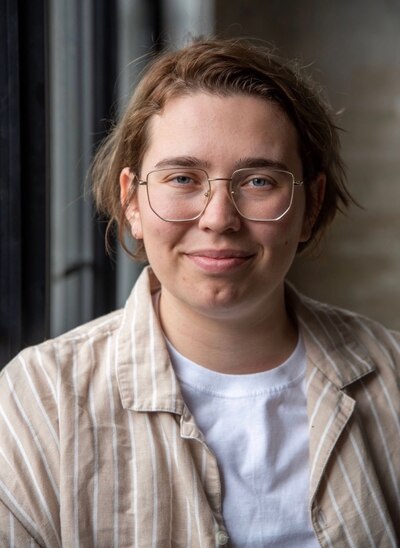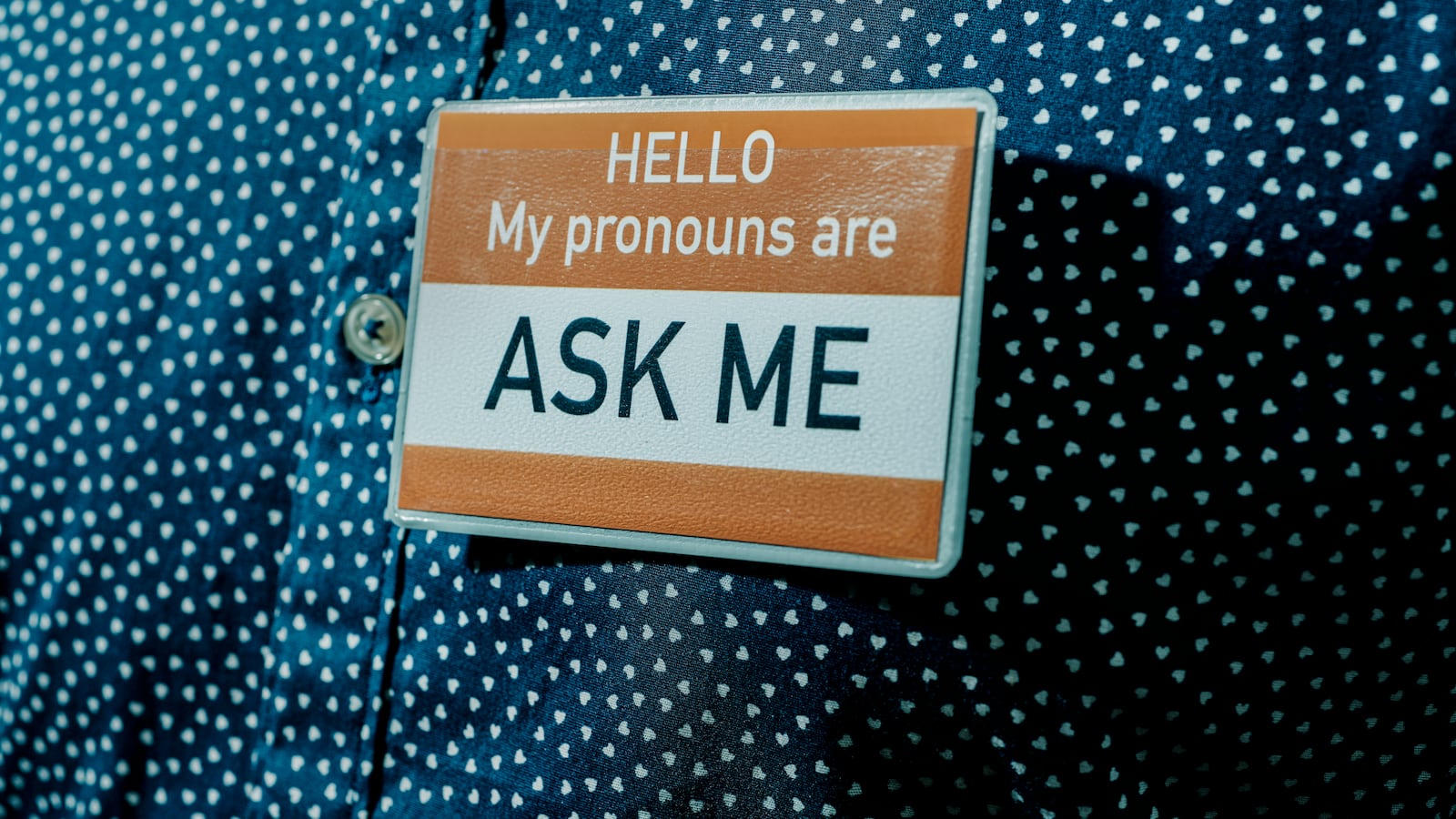“Hi everyone,” I say excitedly as I kneel to join my young students sitting in a circle. “I’m so excited to be here. My name is Teacher Ellie … and I wanted to tell you about my pronouns.”
As a nonbinary teaching artist in New York City public schools, I have begun every residency this way for going on five years. I teach theater, puppet-making, and poetry to students in all grades, but I mostly teach kindergarten to third grade.
When people talk about trans and nonbinary educators, they often assume that we’re getting in kids’ faces, correcting pronouns resentfully, talking about gender in a way inappropriate for their age, and forcing students to be who they’re not. The truth is it’s far more mundane.

“Does anyone know what pronouns are?” I continue. Sometimes, students raise their hands. Sometimes, they talk about the topic of our sessions or something they learned in class just before I arrived. Sometimes, they give an accurate explanation:
“It’s like how you let people know if you’re a boy or a girl or something else,” a first grader in Clinton Hill says.
“Yeah, it’s like the words you use, like, if you’re a boy, you’re he/him. If you’re a girl, you’re she/her,” a seventh grader on the Lower East Side says.
“It’s he/him, she/her, and they/them,” a confident student may say. “Yeah!” I say, “It’s how we talk about people when we don’t use their names.” I give examples, being sure to emphasize the pronoun: “Where did HE go? Where did SHE go? We should go find HIM. We should go find HER.”
“My pronouns,” I tell them, “are they and them.”
I go on to give examples of how you can talk about me and finish with “If you make a mistake and you call me he or she or Miss or Mister, just correct yourself, no big deal.” The two-minute speech isn’t usually for my students. It’s for the adults in the room; the teachers, paraprofessionals, and the occasional admin. I’ve been teaching long enough to know that students learn by example and practice. They can’t be told once; they need to see and hear others talk about me the way I want to be talked about and maybe be corrected themselves a few times.
Sometimes, kids never catch on. Sometimes, teachers refuse to catch on. I correct them gently almost every time, repeating the sentence casually with the correct pronouns as I continue my lesson, never stopping, rarely making eye contact; it’s not a callout, it’s a reminder. If they apologize, I say “no worries,” because if I don’t, they likely will worry.
Yes, some students will quietly try out new pronouns for themselves. I’ll never comment; I’ll just use the ones they ask me to use. Yes, I call students what they ask to be called. I have one first grader who I have called Cheese for an entire school year. Yes, some students insist, “But you’re a girl!” and I always respond, “You only know my gender by asking.”
Sometimes, kids never catch on. Sometimes, teachers refuse to catch on.
Most let it rest, but some don’t. I’m not there to fight students. I’m there to teach theater, puppet-making, or poetry. I’m there, ideally, to enrich kids’ lives and be a part of raising kind, critically conscious community members. I’d like to be respected while I do it and, if a student misgenders me with the best intentions, I still consider that respectful.
I know what you’re thinking, “It’s never that easy.” It usually is. But sometimes it’s not.
I once had a first grader I taught after school for two years tell me that her mom, whom I’d never met, doesn’t like me. “Why?” I asked. “She doesn’t like that you’re a they/them. She says it’s wrong.” “I hope she gets to know me better and can change her mind,” I replied.
I had a high school student respond to my introduction with, “Really? They/them?” “Is that a judgment or a question?” I ask. “A judgment,” he said. I was surprised by his honesty. “All I ask is you respect me, okay?” “Okay,” he said.
Some teachers can’t bring themselves to use my pronouns. The words seem to get stuck in their throat. What’s stuck in their throat isn’t mine. I leave them to wrestle with their discomfort on their own.
I’d be lying if I said I didn’t care if they used my pronouns or addressed me correctly. I desperately wish for it, for my pronouns not to be a blockage and my gender not to be a point of contention. But more than that, I wish for a world in which when people tell us who they are, we believe them, and where all people are seen as whole and infinitely, equally valuable.
Of course, my gender is always present, but so is that of my students and the classroom teachers. It follows us home and down into the subway and to the doctor’s office. It follows me; it doesn’t lead me. Between the short intros and the occasional corrections or questions, there are worlds built and brought to life.
I’ve seen that my modeling of self-creation is a part of that world-building. There are connections made with students grounded in trust, compassion, and joy. I walk into classrooms and am met with cheers of “Teacher Ellie!” and smiles and hugs that reach my soul and armor it for the outside world. There are moments that have rattled me, challenged me, and healed me, and very rarely are they just about me being nonbinary.
Ellie Bell (they/them) is a teaching artist and theater-maker in New York City. They hold an MA in Applied Theatre from CUNY School of Professional Studies and are working toward their Ph.D. in Urban Education at CUNY Graduate Center.


